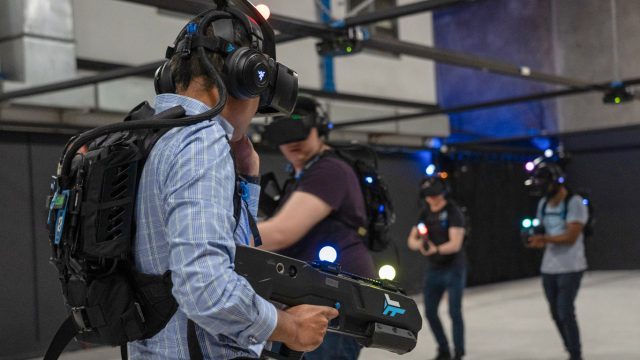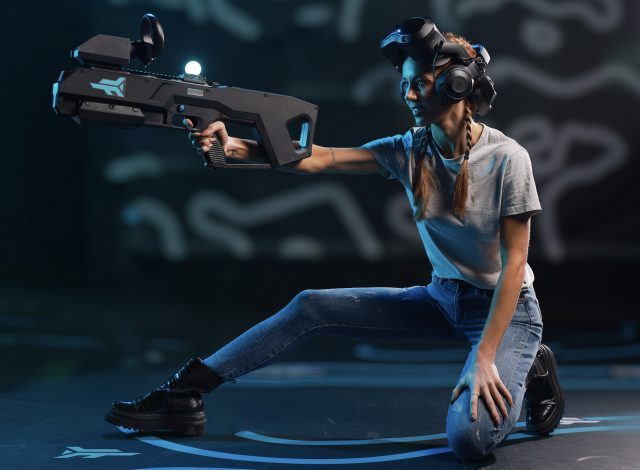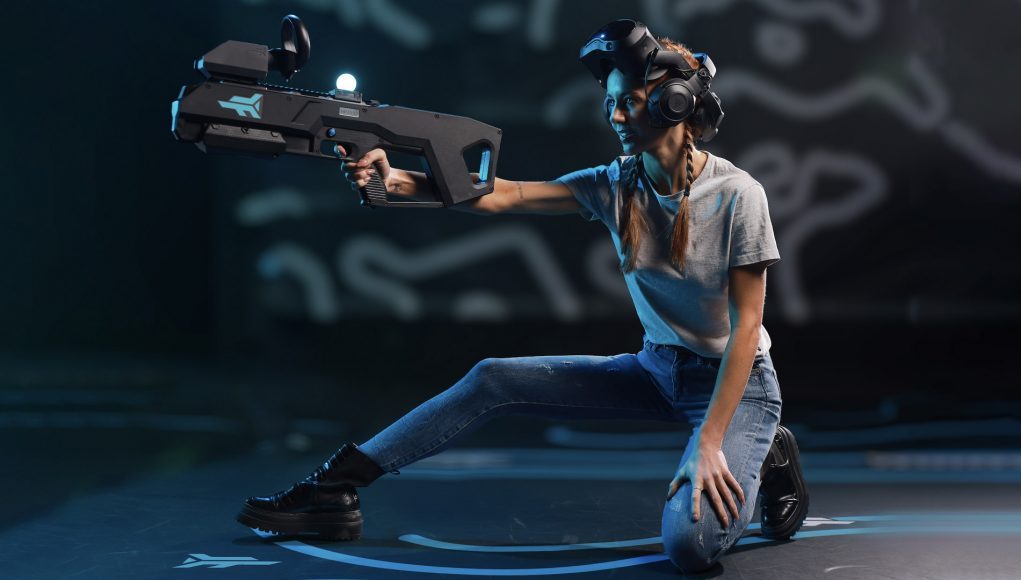Zero Latency, one of the longest running VR attractions in the out-of-home VR space, is dropping the backpack PCs that were once the backbone of the platform. Now the company says it’s moving to standalone Vive Focus 3 headsets with wireless delivery of PC-rendered VR content.
Unlike a VR arcade, which lets customers play consumer VR content, Zero Latency is a VR attraction offering totally unique multi-user VR experiences designed to be played in a large, shared arena.

The company, which offers up its platform and experiences to franchisees, has steadily upgraded its VR tech as the space has developed.
Early on the system relied on a custom backpack PC paired with OSVR HDK 2 headsets and an optical overhead tracking system. Eventually the company moved to purpose-built VR backpacks and first-gen WMR headsets from HP, which allowed it to streamline the system considerably by dropping the overhead tracking in favor of WMR’s inside-out tracking. Later versions of the system moved to the more modern HP Reverb headset.
Now Zero Latency has announced its latest upgrade to the system, which further streamlines the setup by opting for the standalone Vive Focus 3 and streaming PC-rendered content wirelessly to the headsets. The company says it’s streaming over a local Wi-Fi 6E network which purportedly offers lower latency than prior Wi-Fi revisions.

That means dropping the VR backpacks entirely, which not only reduces the cost of the system, but significantly reduces complexity for both operators and users; operators don’t need to clean, charge, and maintain the backpack units, and it’s one less step during onboarding which means more playtime for users.
And while other standalone headsets like Quest 2 might have been an option, HTC’s Vive Focus 3 has a couple of unique advantages for out-of-home use. Especially its swappable battery which reduces the number of headsets needed on hand as the batteries can be charged independently and swapped on the fly.
On the content side, Zero Latency locations continue to offer the same experiences as before, which span cooperative and competitive multiplayer experiences with up to eight simultaneous players. Though, given the company’s knack for innovation in their in-house content, it’ll be interesting to see if the move to a more simplified system will unlock potential for experiences that wouldn’t quite work with the bulkier setup.
Given today’s announcement, it’ll likely be some time yet before the upgrade rolls out to existing Zero Latency locations, but it seems the company will be offering this upgraded version of the system to new franchisees going forward.







